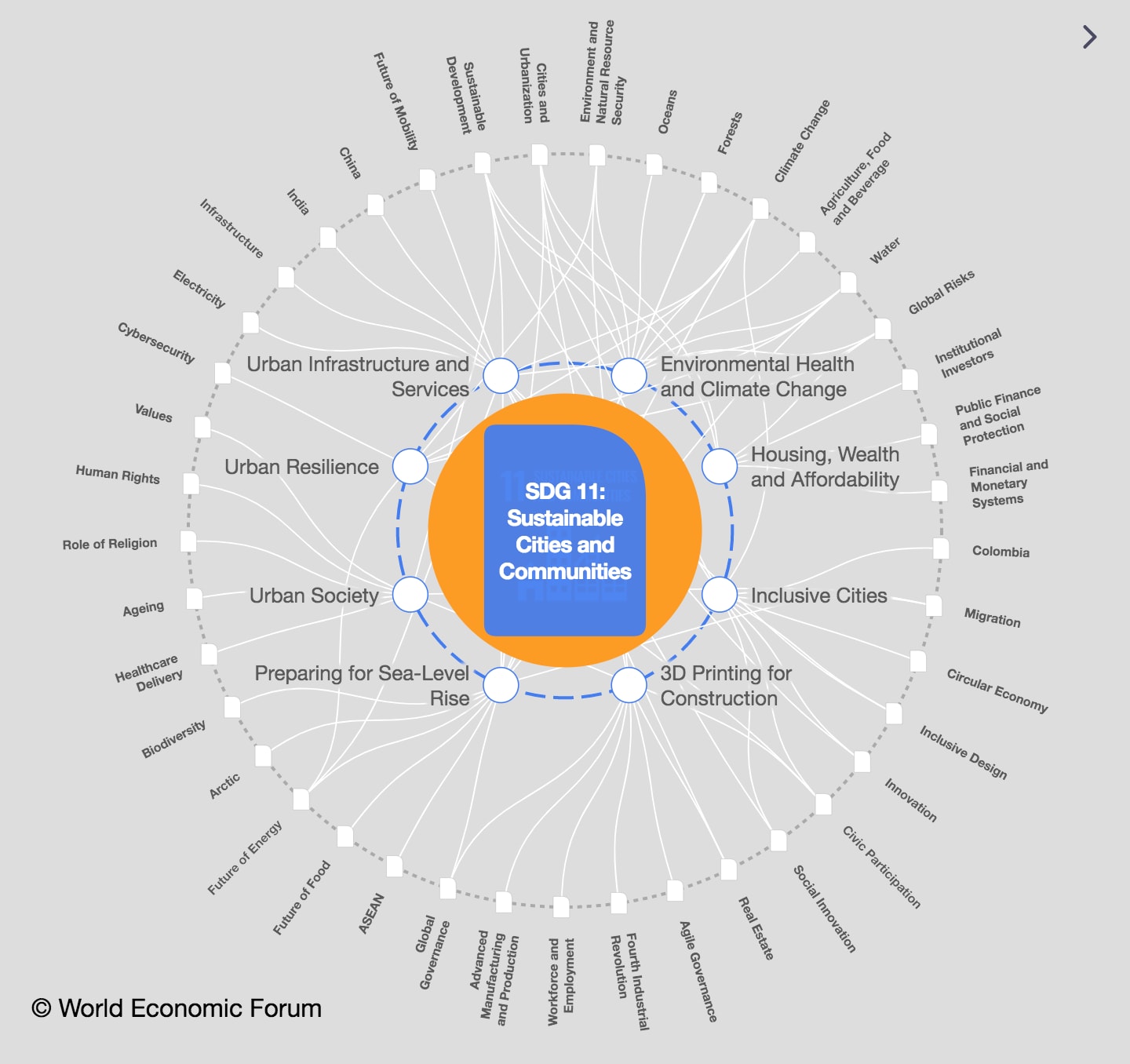How major cities are trying to keep people walking and cycling after the lockdown

Governing bodies introduce plans to reduce traffic and pollution levels after lifting lockdown restrictions. Image: REUTERS/Mohamed Azakir

Get involved with our crowdsourced digital platform to deliver impact at scale
Stay up to date:
SDG 11: Sustainable Cities and Communities
- Governing bodies are looking at ways to reduce traffic and pollution when the world eventually returns to work.
- UK cycle-to-work schemes are up 200% in the number of bicycle orders, with car use roughly 40% less than what it was in mid-February.
- Countries including Italy and Colombia have increased cycle lanes and banned some roads of motorised traffic in a bid to support active travel.
COVID-19 has radically changed our travel habits in just a matter of weeks. Walking and cycling are up, as people enjoy their daily exercise or take essential journeys they might otherwise have made by public transport. Cycle-to-work schemes have seen a 200% increase in the number of bicycle orders, while car use is roughly 40% of what it was in mid-February as more people work from home. Air pollution in cities has duly fallen rapidly, with nitrogen oxide pollution down 70% in Manchester, England.
Transport is the UK’s most polluting sector, so encouraging more people to keep walking and cycling after the pandemic would benefit the environment, as well as make cities healthier for the people who live in them.
The UK government is preparing to keep social distancing intact once public transport networks resume full service by reducing the number of passengers by 90% and staggering work times. But the International Transport Forum predicts there’ll be a sudden rise in car use after the lockdown is eased, with many people opting to avoid potential exposure to the virus on buses and underground trains. So how can we ensure the positive developments in active travel become permanent features of city life?

How cities are adapting
As people change how they work, study and enjoy free time during the pandemic, city authorities are changing how transport can be accessed. Public transport provision in London has dropped due to record low demand, and the London mayor’s office is developing a plan to enable more people to walk and cycle for essential journeys, by extending footways, restricting driving on shopping streets and adding extra cycle lanes. A £5 million fund has been proposed by the Greater Manchester Combined Authority to carry out the same work here.
Similar schemes are being implemented elsewhere. Paris has created 650km of new cycle ways, including “pop up” options which have widened cycle routes, reducing the space given to cars. In Milan 22 miles of roads, formally used by cars, have been turned into walking and cycling routes. In the Colombian capital, Bogota, officials have made 75 miles of streets free of motorised transport.

These temporary changes could reduce the overall demand for motorised travel well into the future. With cleaner air and stronger social bonds, fewer than one in ten people want life to return to “normal” after the pandemic. Lowering the number of diesel and petrol vehicles, allowing people more space to walk, run and cycle through city streets and designating more green space for residents to enjoy could make urban areas permanently happier.
Barriers to change
To head off this danger of a return to heavier car use, the UK government recently pledged a £250 million emergency fund to create pop-up cycle lanes, widen pavements and create walking and cycling only streets across England. In the long term, Transport Secretary Grant Shapps promised a £2 billion national cycling plan, which includes legal changes to protect road users and at least one “zero emissions city”, where the centre would be for bikes and electric vehicles only.

Research suggests that 58% of car journeys in the UK are shorter than 5km, so walking or cycling could be the main alternative for many city dwellers. That’s how people in Denmark got around while still maintaining social distancing. More Danes are cycling than ever, but a cycling culture had already existed in the country for a long time.
Cultural changes can take a long time to take root. A lasting transformation of city streets will need careful planning and buy-in from the public. The enjoyment that many have taken from quieter streets during their daily exercise could produce a cultural shift towards more active travel and less car use in the UK. But in coming weeks and months, clear guidance from the government on using transport safely and efforts to build the infrastructure for walkers, runners and cyclists will be critical to making it stick. Reshaping cities to allow people more space to walk and cycle will help lay the ground for permanent change.
Don't miss any update on this topic
Create a free account and access your personalized content collection with our latest publications and analyses.
License and Republishing
World Economic Forum articles may be republished in accordance with the Creative Commons Attribution-NonCommercial-NoDerivatives 4.0 International Public License, and in accordance with our Terms of Use.
The views expressed in this article are those of the author alone and not the World Economic Forum.
The Agenda Weekly
A weekly update of the most important issues driving the global agenda
You can unsubscribe at any time using the link in our emails. For more details, review our privacy policy.
More on Industries in DepthSee all
Robin Pomeroy
April 25, 2024
Daniel Boero Vargas and Mandy Chan
April 25, 2024
Abhay Pareek and Drishti Kumar
April 23, 2024
Charlotte Edmond
April 11, 2024
Victoria Masterson
April 5, 2024
Douglas Broom
April 3, 2024






